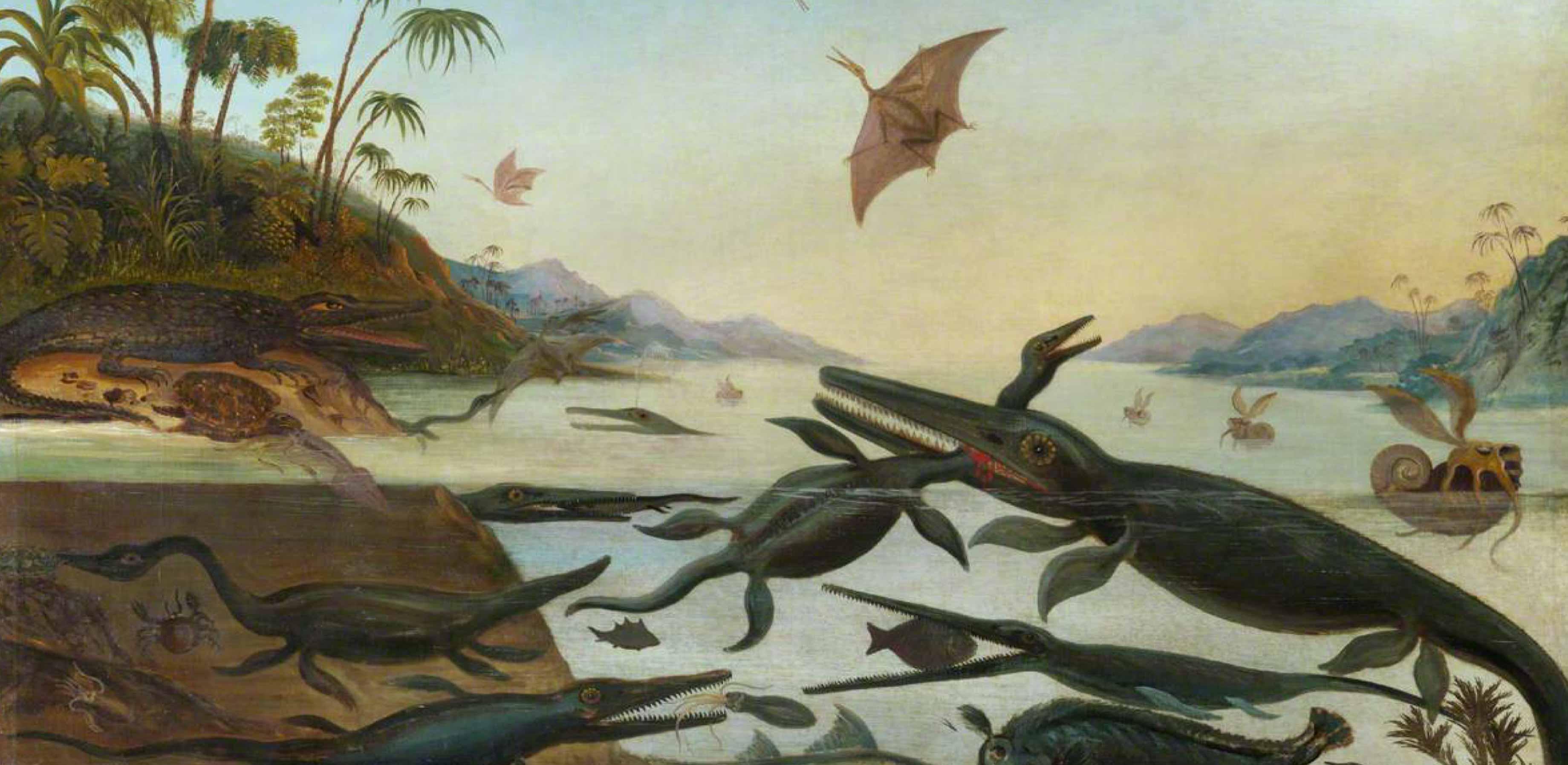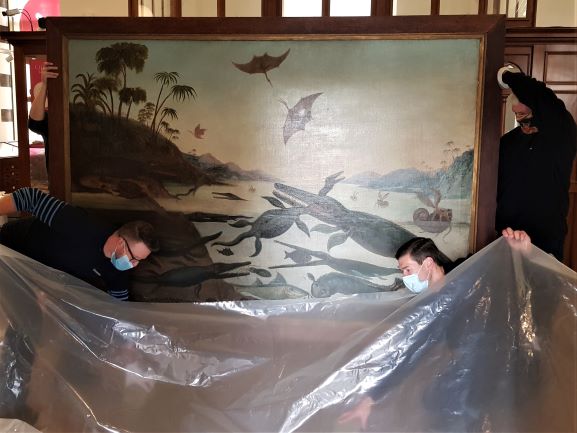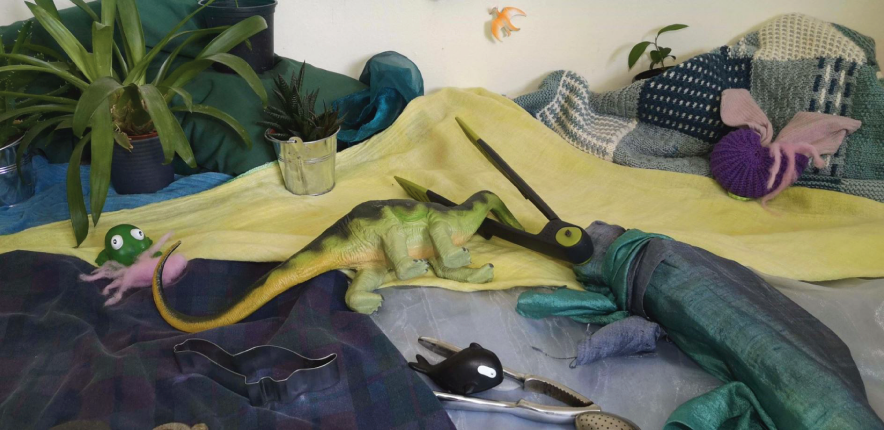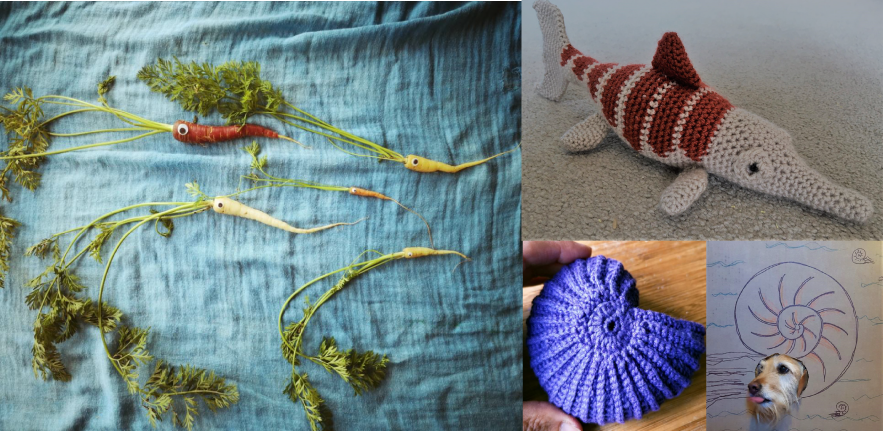
Submitted by Administrator on Mon, 19/10/2020 - 10:04
Duria Antiquior, or ‘Ancient Dorsetshire’, has for many years been an important part of the Sedgwick Museum displays. The painting, which depicts a prehistoric shoreline teaming with marine life, has been described as ‘the first true scene from deep time’ to be based on fossil evidence. Today the painting sets off for Paris where it will form part of a new exhibition ‘The Origins of the World: The invention of Nature in the 19th Century’ at the Musée D’Orsay - opening later in the autumn.
Back in the 1800s, fossil collecting was reserved mainly for the wealthy and educated. The rocks of the Dorset coast were popular amongst fossil-hunters, who were fascinated by the treasure trove of specimens, from squid-like belemnites, fish and ammonites to gigantic marine crocodiles and dolphin-like ichthyosaurs
It is little wonder that these fossils captured the imaginations of collectors - transporting them back millions of years and inspiring the movement now known as palaeoart.
English geologist, Henry De la Beche was the first to depict the prehistoric scene in an 1830 watercolour. Painted 30 years before Darwin published the Origin of Species, it was the first science-based illustration to feature extinct creatures.

Specialist art movers Constantine carefully wrap Duria Antiquior up for its journey to Paris.
The scene is based on fossil evidence found by the celebrated collector Mary Anning in Lyme Regis. Anning was the first to recognize the ichythosaur for what it was and also uncovered the first plesiosaur fossils.
It was Anning’s descriptions of the ichthyosaur’s stomach contents – including fish scales and bones – that allowed geologists to build a vivid picture of the food chain, and Henry De la Beche to catch these creatures in the act of devouring their prey.
De la Beche went on to become a close friend of Anning, and later commissioned the illustrator George Scharf to make lithographic prints of the painting – with the proceeds from Scharf’s prints, each selling for £2 10 s, going on to support her.
The original print was widely circulated in academic circles, and went on to inspire several adaptions. The oil painting in the Sedgwick gallery was painted by Cambridge artist Robert Farren for Adam Sedgwick in 1850. It is thought that Sedgwick had it hanging in his office, and also used it in his lectures.
This year saw members of the public recreate the painting using household objects as part of the Museum’s #DIYDuria project. The new artworks ranged from entire reconstructions of the scene – using pots and utensils to represent marine reptiles and house plants as trees – to crochet ichthyosaurs and carrot belemnites (complete with googly eyes). The collection, which stemmed from the Getty Museum’s call during lockdown for social media users to create versions of their art collections at home, will appear as an online gallery this Winter.


A lockdown take on Duria Antiquior: Just some of the recreations sent in by the public for the social media campaign #DIYDuria. The images will feature in an online gallery hosted by the Sedgwick Museum later this year.
